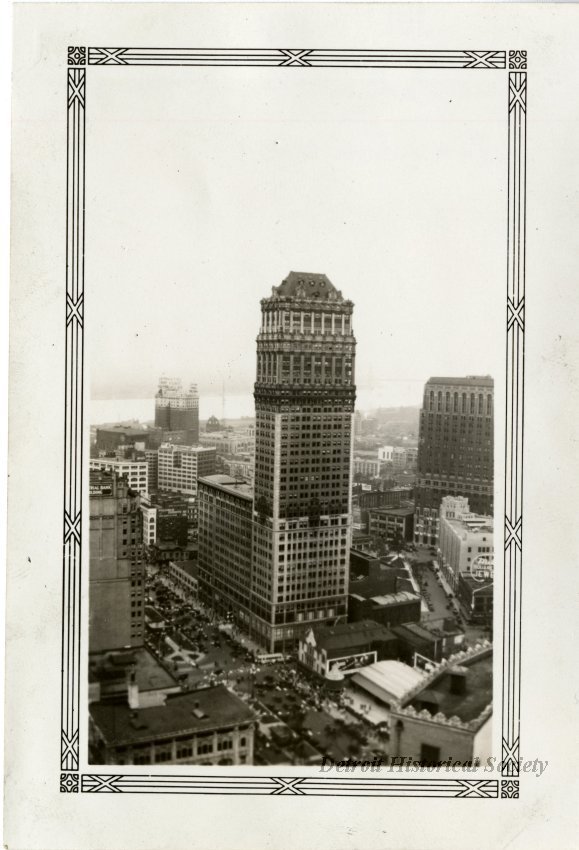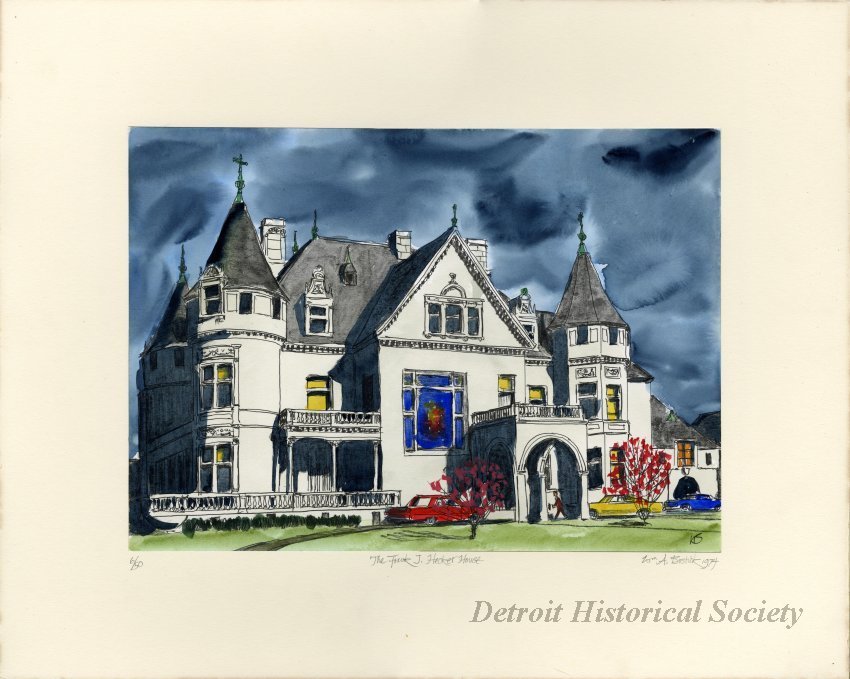Born in Bliesdalheim, Germany in 1861, architect Louis Kamper graduated from the technical school in Rheinpfalz, Germany before coming to New York City with his family in 1880. He apprenticed at McKim, Mead and White Architects in New York until moving to Detroit in 1888 where he joined the firm of Scott & Scott.
In 1889, at age 26, Kamper’s first major commission at Scott & Scott was the Col. Frank J. Hecker House, a French chateau-like structure at the corner of Woodward Avenue and Ferry Street. The firm was so impressed with Kamper that they made him a partner in the newly renamed Scott, Kamper & Scott firm in 1889 which burnished his reputation among Detroit’s wealthy elite. Also in 1889, inspired by the towers and turrets of the Houses of Parliament in London, Kamper designed the massive, wooden Gothic and Romanesque-style Detroit International Fair and Exposition Pavilion, which was located near the Detroit River just north of the mouth of the Rouge River.
In 1913, Kamper won the commission to build the Roseland Park Mausoleum which was the largest public mausoleum in the U.S. at the time. This commission then led to a series of projects that would guarantee Kamper’s fame as one of Detroit’s leading architects. Kamper’s most famous projects, many of which were in the Italianate style, include: The Book Building in 1916, the Book-Cadillac Hotel, Carleton, Eddystone, Park Avenue and Royal Palms hotels all completed in 1924. Kamper’s one major foray into the Art Deco style was the triangular-shaped Water Board Building completed in 1928. Kamper completed the 36-story Book Tower in 1926, and had plans for a larger 81-story tower that was cancelled due to the Great Depression. The Book brothers’ vision of transforming Washington Boulevard into the “Fifth Avenue of Detroit” was the driving force behind Kamper’s designs for many of the buildings lining the boulevard.
In all, Kamper designed over 100 commercial and residential structures, helping to mark Detroit as an architectural leader in the first half of the 20th Century. Kamper died on February 24, 1953 and was buried in the Roseland Park Mausoleum which he had designed.

